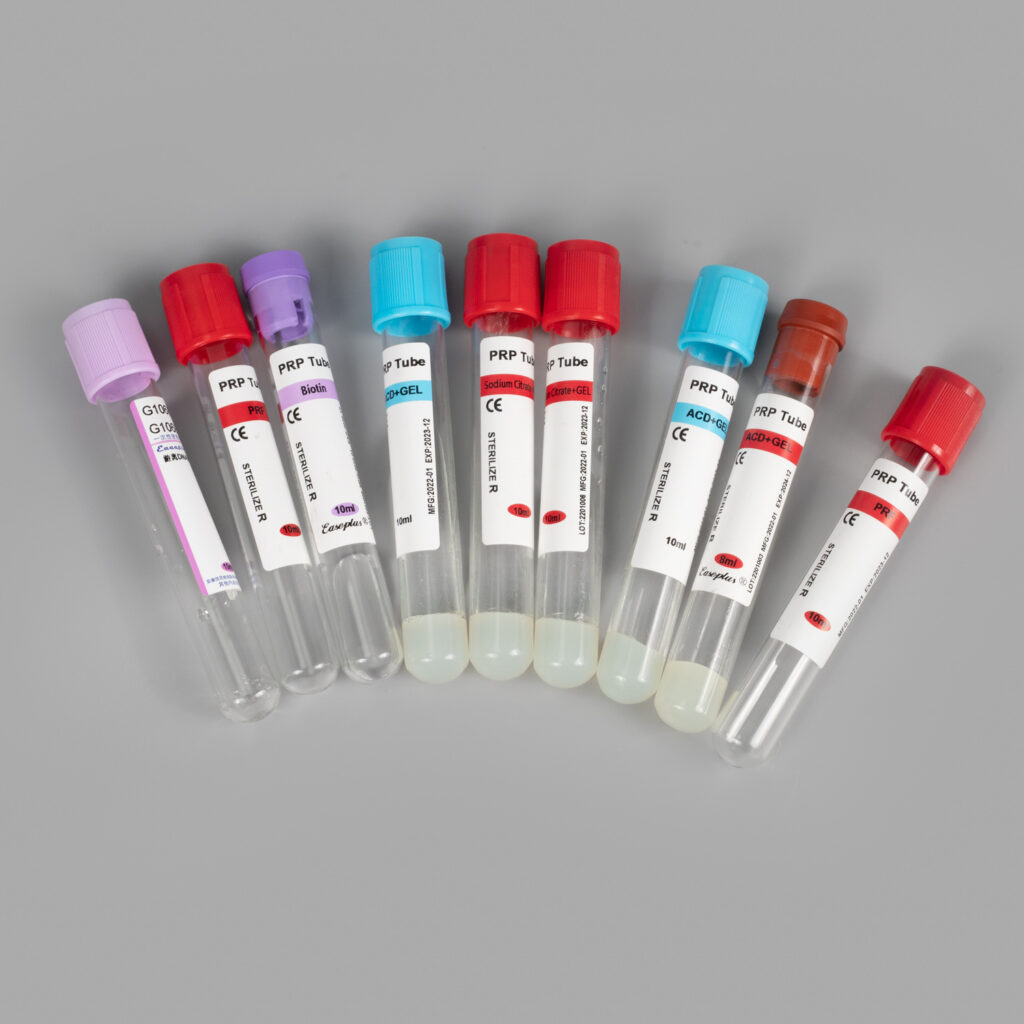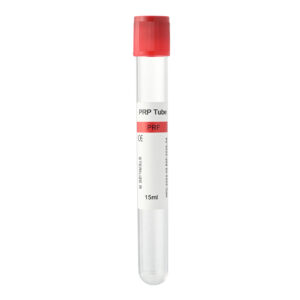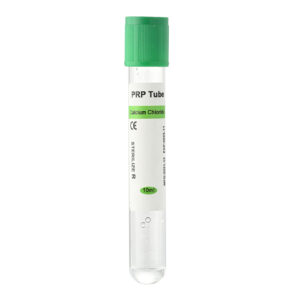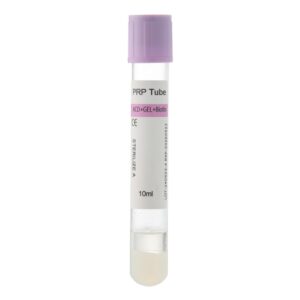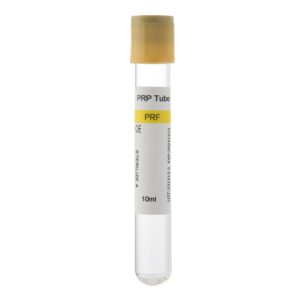Platelet-rich plasma (PRP) technology has become a highly regarded therapy in the medical and cosmetic fields. PRP is known for its outstanding effects in tissue repair, wound healing, and anti-aging treatments. However, properly using the correct blood collection tube is the key to successfully extracting PRP. In this article, we will provide a detailed overview of the types of blood collection tubes used for PRP extraction and the features and applications of each type.
Types of Blood Collection Tubes Used in PRP Extraction
Specific types of vacuum blood collection tubes are commonly used when extracting PRP. These tubes are designed with considerations for blood separation, platelet retention, and ease of operation. The most common types of blood collection tubes used for PRP extraction include:
- Blood Collection Tubes with ACD Solution
ACD (Acid Citrate Dextrose) is an anticoagulant that prevents blood from clotting during collection and centrifugation while also helping maintain platelet activity. Healthcare providers widely use ACD tubes in PRP extraction because they effectively preserve platelet viability, making the extracted Platelet-rich plasma more biologically active. These tubes suit applications requiring high platelet functionality, such as wound healing and tissue regeneration. - Blood Collection Tubes with Gel Separator
Gel separator tubes are a combination of anticoagulant and a special gel. The gel forms a physical barrier between plasma and red blood cells during centrifugation, effectively separating platelet-rich plasma from other blood components. This tube type is especially suitable for clinical and cosmetic applications requiring high-purity plasma. The gel separator significantly improves the efficiency of blood separation and reduces cross-contamination of blood components, resulting in purer Platelet-rich plasma. - SST (Serum Separation Tubes)
In some cases, PRP extraction may use SST tubes. These tubes contain a clot activator and a gel for separating serum. After centrifugation, the gel layer helps to separate serum from red blood cells. Although SST tubes do not directly provide anticoagulation, healthcare providers can use them for PRP extraction in specific clinical settings, such as certain skin repair and cosmetic treatments where anticoagulation is unnecessary.
Materials and Design Features of PRP Blood Collection Tubes
The design and material selection of Platelet-rich plasma blood collection tubes plays a crucial role in ensuring the quality of PRP. Blood collection tubes are typically made from high-quality polypropylene or polycarbonate to ensure stability during centrifugation and resistance to chemical corrosion. Additionally, the tubes’ vacuum-sealed design ensures contamination-free blood collection, minimizing external influences on blood components.
Role of Anticoagulants and Their Selection
Anticoagulants play a vital role in PRP collection, primarily by preventing blood clotting during collection and processing. Common anticoagulants include Sodium Citrate and EDTA, but ACD is widely used for PRP extraction due to its superior ability to maintain platelet function and activity. The choice of anticoagulant directly affects the state of the platelets during extraction and the efficacy of the final PRP.
Advantages of Gel Separators
The gel separator in PRP blood collection tubes enhances the efficiency of blood separation. The gel effectively isolates different blood components by forming a physical barrier during centrifugation. This ensures that the extracted Platelet-rich plasma contains fewer red and white blood cells, increasing platelet concentration and purity, thus enhancing its clinical efficacy. High-quality gel separators also reduce cross-contamination between blood components, further ensuring the quality and safety of PRP.
Why Is Choosing the Right Blood Collection Tube So Important?
The choice of blood collection tube is critical to the quality of Platelet-rich plasma extraction because the blood collection and centrifugation process directly influences platelet activity and concentration. The right blood collection tube ensures:
- Maximal Platelet Retention: The type of anticoagulant used determines the state of the platelets during separation, which affects the quality of the final PRP.
- Increased Separation Efficiency: Gel separators and other special components help physically separate different blood components during centrifugation, improving separation efficiency and purity.
- Reduced Risk of Contamination: Using the correct blood collection tube also reduces the risk of contamination during extraction, ensuring the purity and safety of PRP.
Applications of PRP Blood Collection Tubes
Healthcare providers widely use PRP therapy in various fields, including orthopedics, dentistry, and cosmetic anti-aging treatments. Different applications have slightly different requirements for PRP composition, making choosing the appropriate blood collection tube essential. For example, cosmetic and dermatological applications often require a high concentration of highly active platelets, making ACD and gel separator tubes the optimal choice. In orthopedics and sports medicine, Platelet-rich plasma therapy accelerates healing joints, ligaments, and tendons, where ACD tubes are particularly suitable due to their ability to maintain high platelet concentration with growth factors.
Conclusion
In PRP extraction, choosing the right blood collection tube is key to ensuring therapeutic efficacy. Healthcare providers most commonly use ACD solution tubes and gel separator vacuum tubes in clinical practice because these tubes effectively maintain platelet activity and improve separation efficiency. Understanding the different types of blood collection tubes and their roles in Platelet-rich plasma extraction can help physicians and healthcare professionals perform PRP treatments more effectively, ensuring the best possible outcomes for patients.
Furthermore, the success of Platelet-rich plasma therapy depends on standardized collection, processing, and injection procedures. Choosing the appropriate blood collection tube is fundamental, and healthcare professionals must also strictly follow related protocols to ensure the safety and efficacy of each step, ultimately providing high-quality treatment services to patients.

